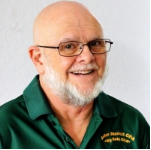
This is part 3 of 5 in a series on Passive Activities (see Part 1 and Part 2).
Passive loss rules do not apply to real estate professionals. However, the rules for who is a real estate professional for tax purposes are rather specific and the IRS enforces these rules rather strictly. If one is classified as a real estate professional, any losses are treated as ordinary losses and may be deducted against other income sources. Gains are taxed at ordinary income rates, however, income from rental activities is not subject to self-employment tax. However, rent is one of the categories of income that is subject to the Net Investment Income Tax, so there may be an additional 3.8% tax on these profits.
In order to be classified as a real estate professional, three requirements must be met:
- The taxpayer must own at least one interest in rental real estate.
- More than 50% of the individual’s personal services during the tax year must be in real estate trades or businesses in which the individual materially participated.
- The individual must perform more than 750 hours of service in those same trades or businesses.
There are four activities that are included in the definition of a real property trade or business for purposes of determining a real estate professional. These may be combined to meet the 750-hour test.
- Development, redevelopment, construction, reconstruction, acquisition, or conversion.
- Rental.
- Operation, management, or leasing.
- Brokerage trade or business. It should be noted that financing activities do not constitute a real property trade or business and cannot be included in the definition of real property brokerage.
The time tests cause the most problems for real estate professionals, as the individual must be able to prove that he tests are met. Proof may be through any reasonable means, though daily time reports or logs are preferred. However it is acceptable to identify services performed showing approximate hours performing such services. These should be based on appointment books, calendars, or narrative summaries.
It should be noted that inadequate records have doomed status as a real estate professional, as the individual was unable to prove that he/she met the required time thresholds. The IRS or courts are not required to accept ballpark guesstimates or unverified undocumented testimony of taxpayers.
Required work to determine professional status differs from the material participation rules. Participation is any work done by an individual in any capacity related to real property in which the individual owns an interest. There is a restriction for employees. Personal services of an employee do not count unless the employee is at least a 5% owner.
The 750-hour test does not apply to each rental, but may be combined with all eligible properties. Time spent on-call does not qualify. In filing a joint return, only one spouse needs to qualify as a real estate professional.
Even if the taxpayer passes the 50%/750 hour tests, another, more restrictive test still must be applied. The taxpayer must prove that he or she materially participated in managing the real estate rentals. There are seven measures of material participation, but only three are somewhat common:
1. Managing and operating the rental real estate activity for more than 500 hours during the year,
2. Doing substantially all the work required to manage and operate the properties or,
3. Working more than 100 hours during the year with no one participating more than the landlord.
Note that this restriction deals with managing and operating the rentals, it does not include actual work performed on the units. Time spent by a spouse in these activities may be tacked onto the owner’s time to meet this test.
Several activities have to be specifically listed as not counting toward these hours:
1. An activity not customarily performed by owners and one of the purposes of such work is to exclude the passive activity losses.
2. Time spend preparing, studying, and reviewing financial statements.
3. Work as an investor.
Note that the tax definition may differ from other definitions of a tax professional. The IRS is rather restrictive in who qualifies as a real estate professional. If there is any question about your qualification as one, you should consult a knowledgeable tax preparer.























Recent Comments